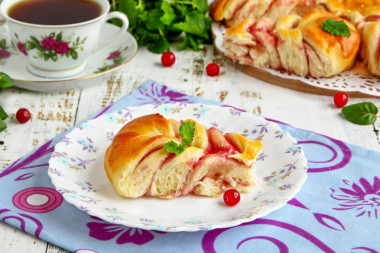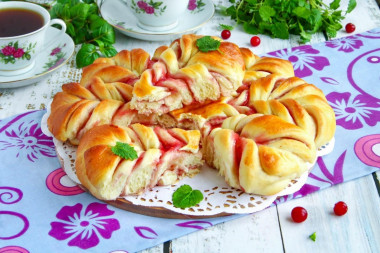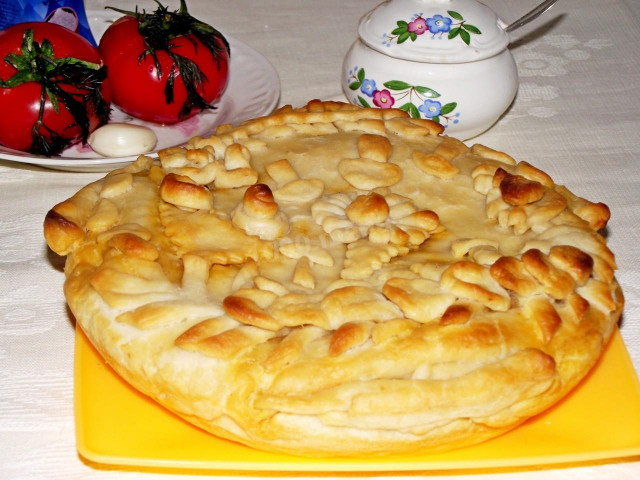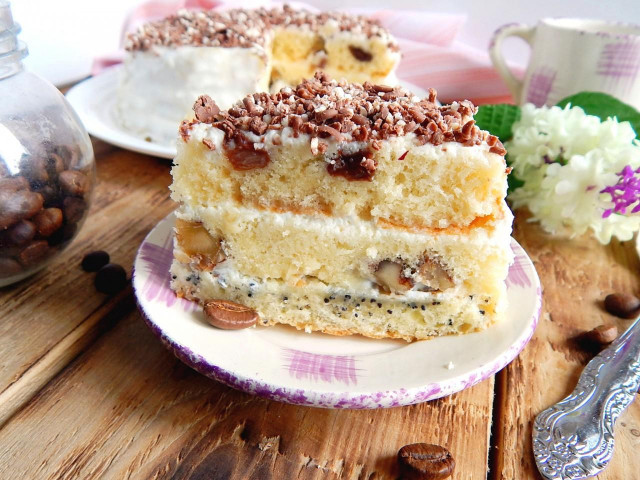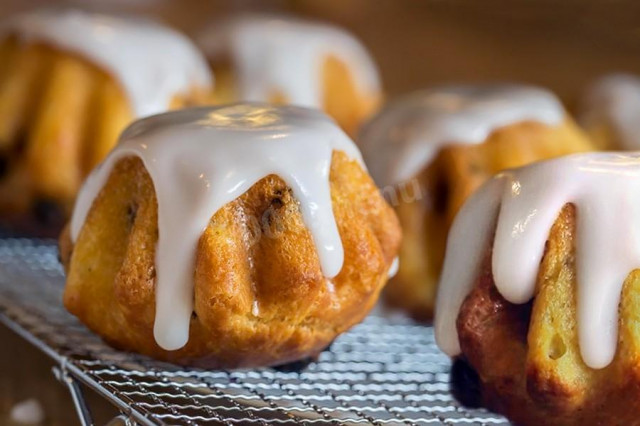Composition / ingredients
Step-by-step cooking
Step 1:

How to make a Yeast Cake Flower? Measure out the necessary ingredients. Any jam, jam, jam or thick jam is suitable for the filling. Heat the milk slightly.
Step 2:
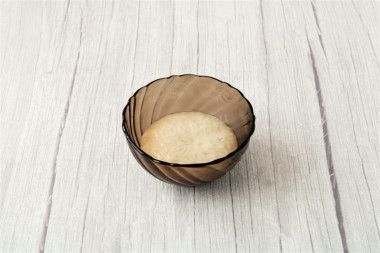
In a small bowl, combine yeast, 1 tsp sugar (from the total amount) and 50 ml of lukewarm milk. Mix everything well and leave for 10-12 minutes to activate the yeast. A foam cap will appear on the surface. So yeast is active. If the "cap" does not form or it happens very slowly and weakly, it is better to replace the yeast with others.
Step 3:
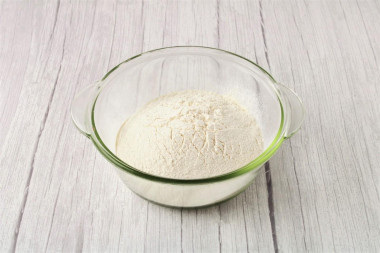
In a wide bowl, sift the flour so that it is enriched with oxygen. This will improve the rise of the dough, and the baking will turn out lush and airy.
Step 4:

Melt the butter in the microwave or on low heat on the stove. The oil should cool down a little.
Step 5:
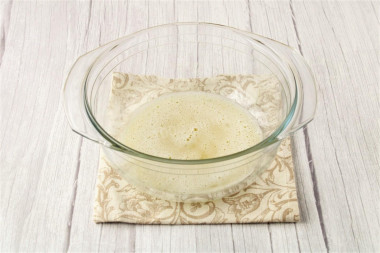
In a deep, volumetric bowl, beat the egg with salt and sugar until smooth.
Step 6:

Pour in the remaining milk, mix.
Step 7:

Add the yeast mixture, mix lightly.
Step 8:
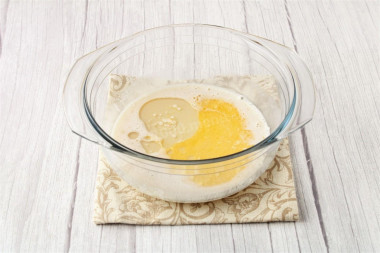
Pour in the non-hot butter and vegetable oil, mix.
Step 9:

Pour in the sifted flour. Do not pour out all the flour at once, it may take less. It depends on the properties and quality of the flour. Stir the dough with a spoon.
Step 10:

Add the rest of the flour gradually, while stirring the dough with your hands. Focus not on the amount of flour, but on the consistency of the dough. It should not turn out to be steep, otherwise it will take a long time to rise and the baking will turn out to be heavy.
Step 11:
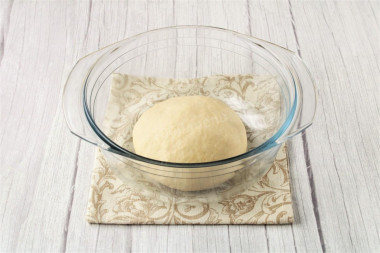
The dough turns out soft, pliable, almost not sticking to the hands. Cover the dough with a towel and leave in a warm place to rise for 80-90 minutes.
Step 12:
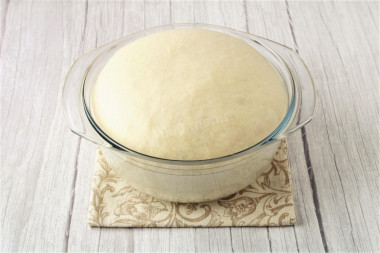
The rise time will depend on yeast activity and temperature. The dough has increased in volume by 2.5 times and is ready for cutting.
Step 13:
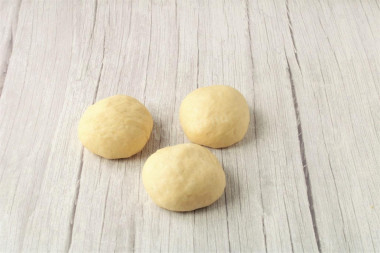
Knead the dough carefully, put it on the table, sprinkled with flour. Divide the dough into 3 equal parts.
Step 14:
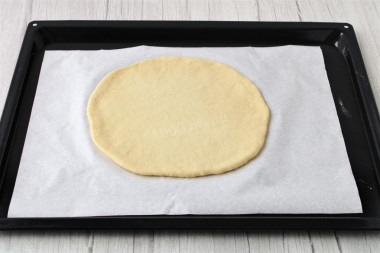
Roll out the first part of the dough into a round layer with a diameter of about 22 cm. Transfer the dough to a baking sheet lined with parchment.
Step 15:

Lubricate the dough layer on top evenly with jam, a little short of the edges.
Step 16:
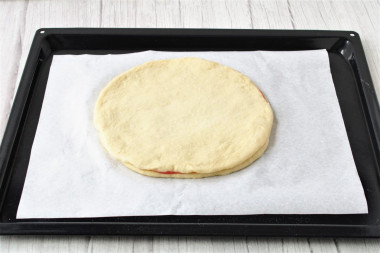
Roll out the second part of the dough in the same way and put it on the first layer so that it completely covers it.
Step 17:

Also brush the dough with a layer of jam.
Step 18:
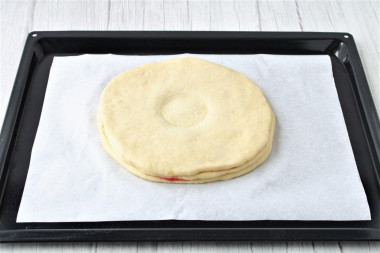
Roll out the third part of the dough and put it on top. Mark the center of the pie with a glass or a notch (about 7 cm in diameter).
Step 19:
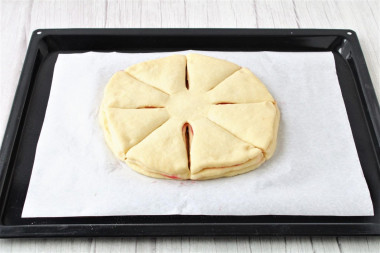
With a knife, cut the dough first into 8 segments, touching the designated center.
Step 20:

Then cut each segment in half again. There should be 16 segments.
Step 21:
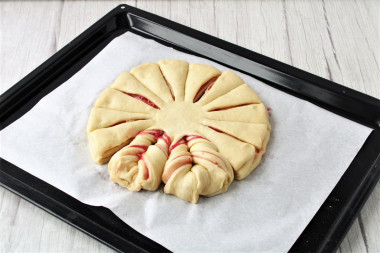
Lift the two adjacent parts of the dough, twist them into opposite sides 2 times and connect them, gently pinching the edges in the middle of the joint.
Step 22:

Do the same with all segments of the test. The result is the shape of a flower (or even looks like a snowflake). Cover the future pie with a light towel or cling film and leave for proofing for 15-20 minutes.
Step 23:

Beat the egg with milk until smooth.
Step 24:
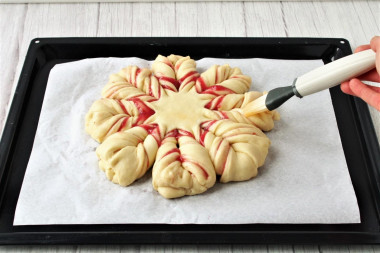
Grease the cake with the resulting mixture before baking.
Step 25:
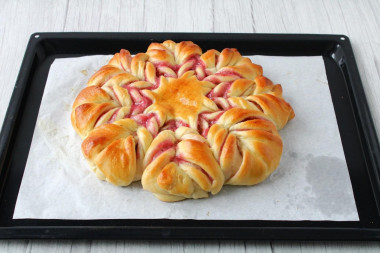
Bake the pie in a preheated 180C oven for about 30 minutes until golden brown. The baking time and mode may be different. Focus on the features of your oven.
Step 26:
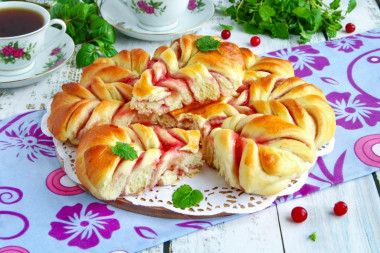
Cool the finished cake and serve it to the table. Bon appetit!
Keep in mind that everyone's ovens are different. The temperature and cooking time may differ from those specified in the recipe. To make any baked dish successful, use useful information about the features of ovens !
In order for the oven to have time to heat up to the desired temperature, turn it on in advance (10-20 minutes before the start of cooking).
Important! Using dry yeast, it should be borne in mind that they occur in two forms: active and instant (read the instructions carefully before use!).
Active dry yeast looks like beads or small balls. Before applying them, they must be brought out of the "sleep mode". To do this, the active yeast is diluted in warm sweet water, milk or whey. The resulting bubbles, foam or "cap" indicate that the yeast is ready for further use. Active dry yeast must be brought to complete dissolution in the liquid, otherwise, due to the remaining grains, the dough may not rise and the baking will be spoiled (yeast grains that have not dissolved in the liquid and got into the dough will not disperse on their own, which means they will not work).
Instant dry yeast is easier to use. They do not need to be activated before use. Such yeast, along with other ingredients, is simply added to the dough. As a result, the baking time is reduced.
It should also be remembered that both types of dry yeast may differ in their activity from different manufacturers.
Caloric content of the products possible in the composition of the dish
- Whole cow's milk - 68 kcal/100g
- Milk 3.5% fat content - 64 kcal/100g
- Milk 3.2% fat content - 60 kcal/100g
- Milk 1.5% fat content - 47 kcal/100g
- Concentrated milk 7.5% fat content - 140 kcal/100g
- Milk 2.5% fat content - 54 kcal/100g
- Chicken egg - 157 kcal/100g
- Egg white - 45 kcal/100g
- Egg powder - 542 kcal/100g
- Egg yolk - 352 kcal/100g
- Ostrich egg - 118 kcal/100g
- Granulated sugar - 398 kcal/100g
- Sugar - 398 kcal/100g
- Butter 82% - 734 kcal/100g
- Amateur unsalted butter - 709 kcal/100g
- Unsalted peasant butter - 661 kcal/100g
- Peasant salted butter - 652 kcal/100g
- Melted butter - 869 kcal/100g
- Vegetable oil - 873 kcal/100g
- Apricot jam - 265 kcal/100g
- Pear jam - 268 kcal/100g
- Quince jam - 223 kcal/100g
- Apple jam - 265 kcal/100g
- Jam - 265 kcal/100g
- Salt - 0 kcal/100g
- Wheat flour - 325 kcal/100g
- Vanilla sugar - 379 kcal/100g
- Dry yeast - 410 kcal/100g



